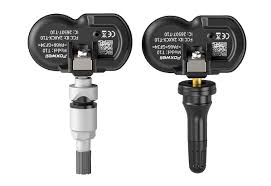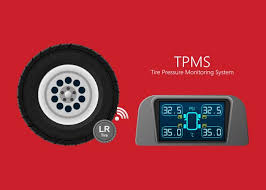Blog
“DIY Guide: Installing an Aftermarket TPMS on Your Car”
DIY Guide: Installing an Aftermarket TPMS on Your Car
A Tire Pressure Monitoring System (TPMS) is a crucial safety feature, helping drivers maintain proper tire pressure to enhance safety, fuel efficiency, and tire longevity. If your vehicle doesn’t come with a factory-installed TPMS or you want to upgrade, an aftermarket TPMS is a great option. This DIY guide walks you through the steps to install an aftermarket TPMS on your car.
What You’ll Need
Before starting, gather these tools and materials:
- Aftermarket TPMS kit (sensor and display unit)
- Tire pressure gauge
- Wrench or tire iron
- Tire valve core removal tool
- Air compressor (optional)
- User manual for your TPMS kit

Step 1: Understand Your Aftermarket TPMS Kit
There are two primary types of aftermarket TPMS kits:
- Internal Sensors: Installed inside the tires, replacing the valve stems. These are more accurate but require tire removal for installation.
- External Sensors: Attach to the valve stems on the outside of the tire. These are easier to install but may be less durable.
Refer to your kit’s manual to understand the components and ensure compatibility with your vehicle.
Step 2: Prepare Your Vehicle
- Park Safely: Park your car on a flat, stable surface and engage the parking brake.
- Inspect Tires: Check each tire for damage or excessive wear. If repairs are needed, address them before installing the TPMS.
- Check Tire Pressure: Use a tire pressure gauge to ensure all tires are properly inflated according to your vehicle’s specifications.
Step 3: Install Sensors
For Internal Sensors:
- Remove the Tire: Use a tire iron to loosen and remove the lug nuts. Lift the car with a jack and carefully remove the tire.
- Deflate the Tire: Remove the valve core using the valve core removal tool to deflate the tire completely.
- Install the Sensor: Remove the existing valve stem and replace it with the TPMS sensor from your kit. Secure it tightly.
- Reinflate the Tire: Reinstall the tire onto the wheel, ensuring the sensor is properly positioned. Use an air compressor to reinflate the tire to the recommended pressure.
For External Sensors:
- Attach the Sensor: Remove the valve cap on the tire and screw the external sensor onto the valve stem.
- Tighten Securely: Use the provided tool or wrench to ensure the sensor is firmly attached.
Step 4: Install the Display Unit
- Choose a Location: The display unit should be placed where it’s easily visible, such as on the dashboard or windshield.
- Mount the Unit: Use the adhesive or mounting bracket provided in the kit to secure the display.
- Power the Unit: Plug the unit into a power source, such as the cigarette lighter socket or USB port. Some kits have battery-powered displays.

Step 5: Pair Sensors with the Display Unit
- Activate the Sensors: Follow the kit’s instructions to activate each sensor. This may involve pressing a button on the sensor or display.
- Program the Display: Assign each sensor to a specific tire position (front left, front right, etc.).
- Test the System: Check the display to ensure all sensors are transmitting pressure readings correctly.
Step 6: Perform a System Test
- Drive your vehicle for a few miles to confirm the system is working accurately.
- Monitor the display for any error messages or irregular readings.
- If issues arise, refer to the troubleshooting section of your kit’s manual.
Step 7: Maintenance Tips
- Check Batteries: External sensors typically have replaceable batteries. Check and replace them as needed.
- Recalibrate as Needed: Recalibrate the system if you rotate or replace your tires.
- Inspect Regularly: Ensure sensors are securely attached and free of damage.
Benefits of Installing an Aftermarket TPMS
- Enhanced Safety: Alerts you to low tire pressure, reducing the risk of blowouts.
- Fuel Efficiency: Properly inflated tires improve mileage and save money on fuel.
- Tire Longevity: Prevents uneven wear, extending the lifespan of your tires.
- Custom Features: Many aftermarket kits include advanced features like temperature monitoring and smartphone integration.
Conclusion
Installing an aftermarket TPMS on your car is a rewarding DIY project that enhances safety and performance. With the right tools and careful attention to detail, you can complete the installation in a few hours. For the best results, always follow the manufacturer’s instructions and perform regular system maintenance.
For more automotive guides and tips, visit RegalXmuse.com!


